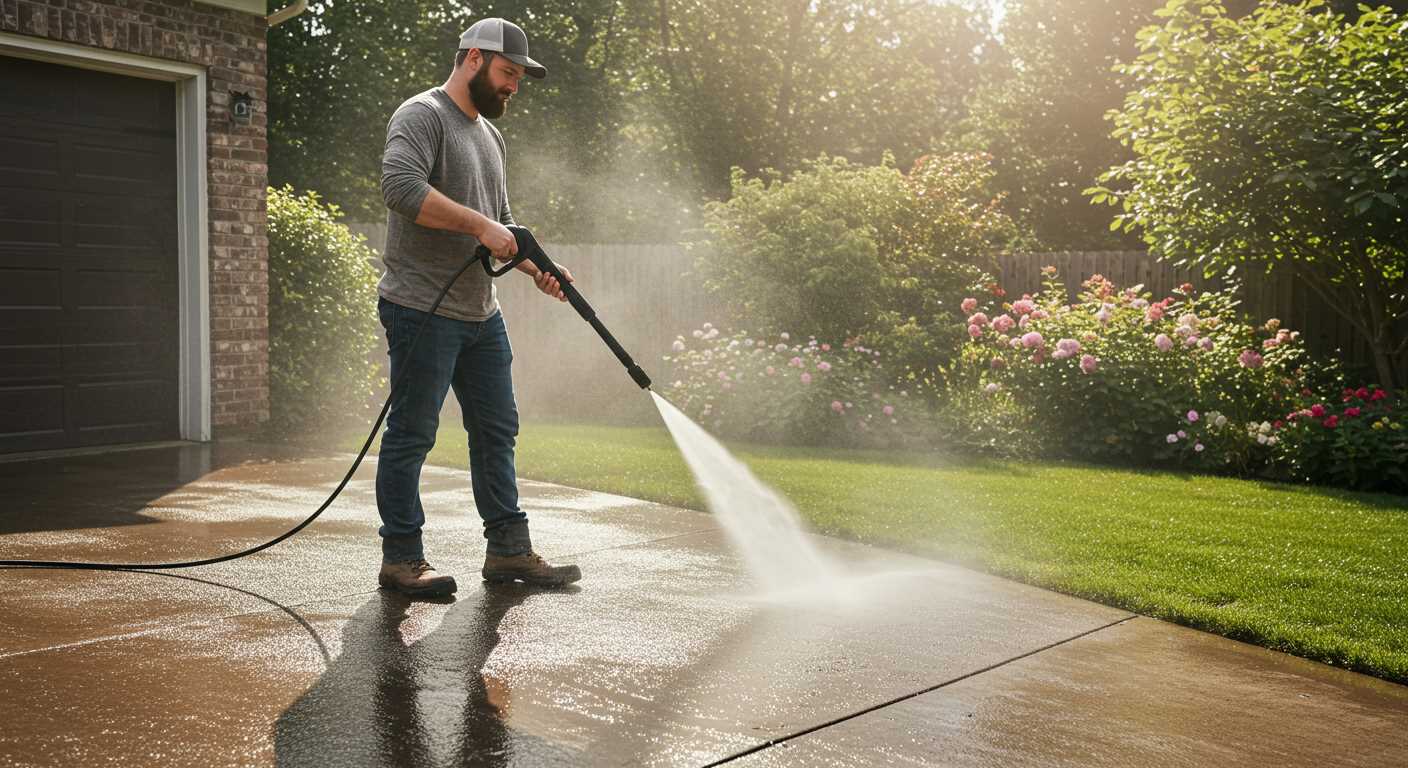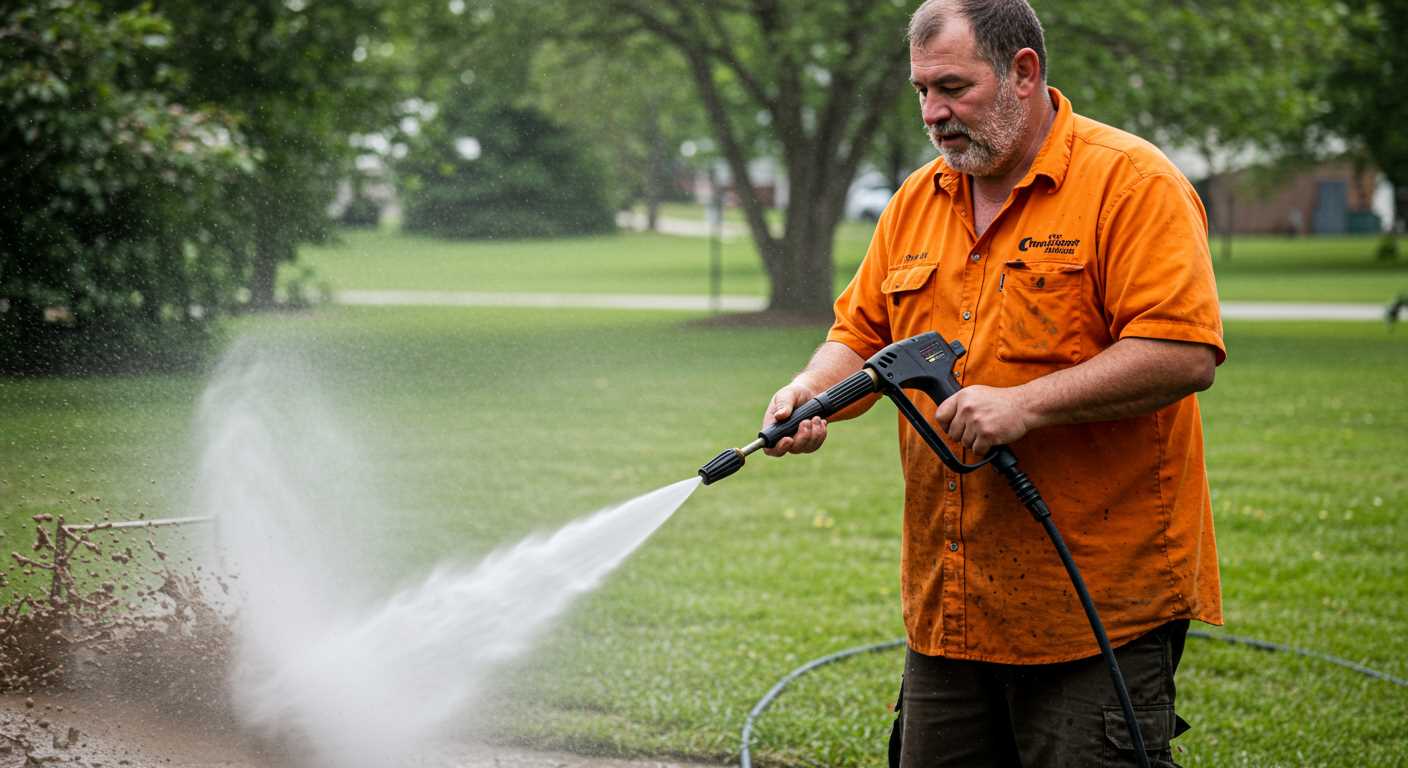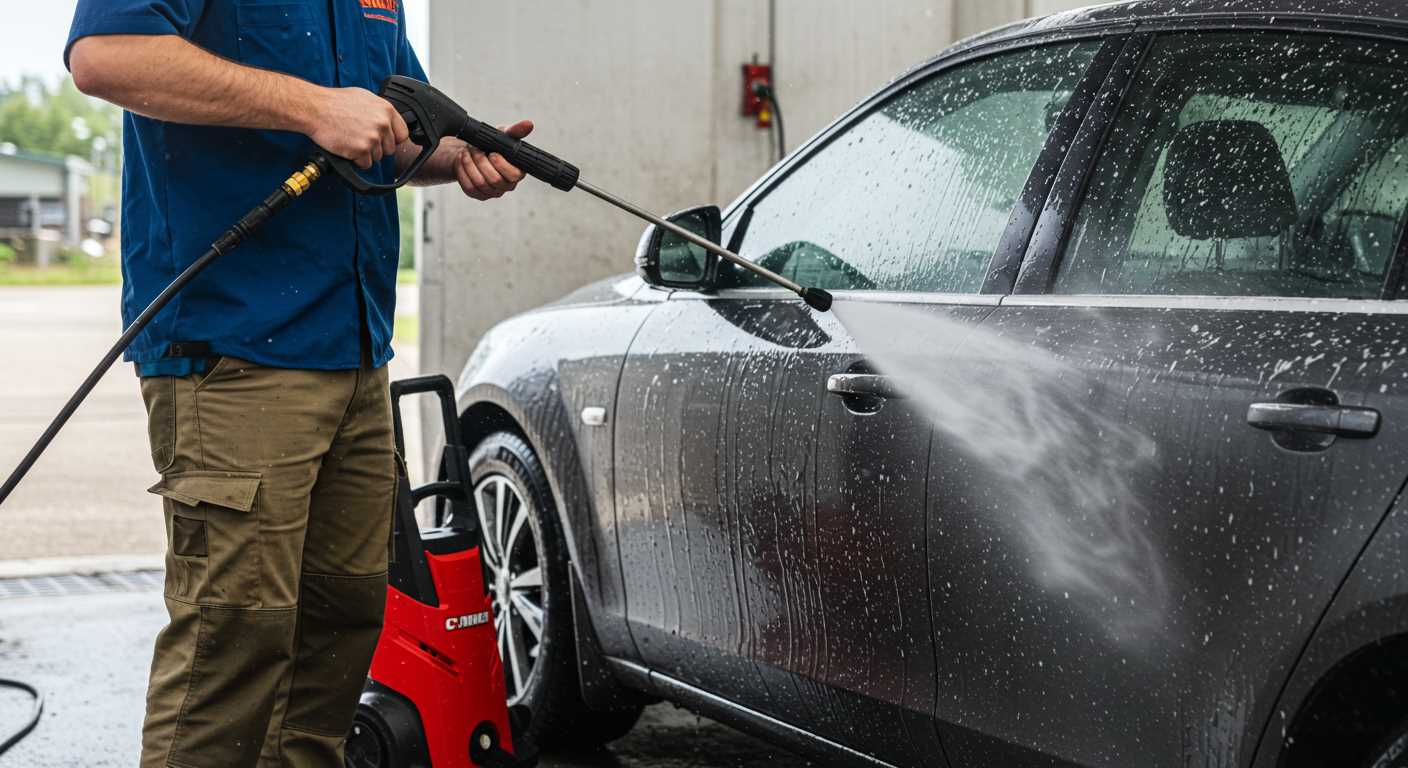



Check the water supply first. Ensure the inlet hose is securely attached, without kinks or damage, and that the water source is turned on. A simple leak or blockage can disrupt flow, causing frustration.
Next, inspect the filter. Many units come equipped with a strainer that can easily become clogged with debris. Remove it, clean any buildup, and replace it to guarantee unobstructed water movement.
Examine the trigger gun for proper operation. If not functioning correctly, it might prevent fluid from exiting the nozzle. Test the trigger for responsiveness and replace if necessary.
Look into the pump itself; it may be airlocked. Tilting the equipment slightly or using the bleed valve can help purge air trapped within. This should restore normal flow.
Additionally, check the spray nozzle. A blocked or damaged nozzle can hinder performance; cleaning or replacing the nozzle can often resolve this issue. If the issue persists, inspect the internal components for wear or damage.
Diagnosis Steps for Low Flow Problems
If your cleaning device is showing decreased flow, start troubleshooting by checking the following aspects:
- Inlet filter: Inspect and clean the inlet filter. Debris can obstruct the flow, drastically affecting performance.
- Hoses: Examine the hoses for kinks, cracks, or blockages. Each of these issues can restrict fluid passage.
- Nozzle: Confirm the nozzle isn’t clogged or damaged. A compromised nozzle can lead to reduced output pressure.
Connections and Settings
Ensure all connections are secure. Loose fittings can lead to leaks, affecting suction. Double-check the pressure settings; incorrect adjustments could result in decreased output. Make sure the device is set to the correct mode for the task at hand.
Internal Components
If external checks yield no results, look into internal components:
- Pump: A failing pump can result in insufficient delivery. Assess for unusual noises or vibrations which indicate wear.
- Seal integrity: Examine seals and gaskets for wear. Damaged seals can lead to fluid bypass, reducing the effectiveness of the equipment.
After addressing these areas, if the flow remains inadequate, consider consulting the user manual for specific recommendations or contacting customer support for expert assistance. My experience indicates that these steps often resolve flow issues effectively.
Checking the Water Supply Connection
First, ensure the hose is securely attached to the inlet of your device. A loose or improperly connected hose can cause significant issues. Inspect the connection points for any signs of wear or damage that might prevent water from flowing.
Next, examine the water supply source. If using a tap, verify that it’s fully opened. A partially closed tap reduces flow, potentially leading to low performance. If connected to a hose, check for any kinks or blockages that can restrict fluid movement.
Always look for leaks in the hose or fittings. Even minor leaks can compromise pressure and overall functionality. If you identify any, replace damaged components to restore proper operation.
Confirm that the supply line itself is clean and clear. Sediment or debris can accumulate over time, obstructing flow. If this is suspected, detach the hose and flush it to remove any build-up.
For testing purposes, you can also run the machine briefly without any attachments to see if liquid is flowing. If it operates correctly in this state, the problem may lie within the attachments or nozzles.
| Potential Issue | Solution |
|---|---|
| Loose connections | Secure all fittings and connections. |
| Closed tap | Ensure the water tap is fully opened. |
| Kinked hose | Straighten any bends or twists. |
| Leaks in hose | Inspect and replace damaged sections. |
| Clogged supply line | Flush the hose or line to clear obstructions. |
Lastly, verify the specifications of the water supply. Some devices require a certain minimum pressure or flow rate to operate effectively. Consult the manual for exact requirements and match them with your source.
Inspecting the Hose for Kinks or Damage
Begin by examining the hose meticulously for any signs of kinks, twists or other forms of damage. Even minor bends can severely restrict flow. Stretch the hose flat to reveal potential obstructions. If you detect flattening or pinching, these areas will need to be straightened or replaced to restore optimal function.
Check for Leaks

Inspect the entire length of the hose for leaks. Run your fingers along the surface to feel for moisture or air escaping. A small tear can lead to substantial loss of pressure and efficiency. If found, the most reliable solution is to replace the damaged section of the hose.
Assess Connector Integrity

Evaluate the connectors at both ends of the hose. Ensure they are securely attached and undamaged. A loose connector can result in a disruptive flow, so tighten any that seem a bit slack. Replace any connectors that show visible wear or deterioration to maintain performance.
Examining the Water Filter for Blockages
Check the filter located at the water inlet. If it’s clogged, it will restrict fluid flow. Remove the filter and inspect it for debris or mineral build-up. Clean it thoroughly using a brush and running water. Ensure it is free of any blockages before reassembling it.
If any parts seem worn or damaged, consider replacing them. A clean and intact filter is crucial for maintaining optimal operation. Regular checks and maintenance can prevent future flow issues, prolonging equipment lifespan.
Verifying the Pump Functionality
Begin by checking for any unusual noises emanating from the pump during operation. If the sound is irregular or non-existent, this may indicate a malfunction. Disconnect the power supply before proceeding with further inspection.
Next, examine the inlet and outlet ports for any visible obstructions or damage. Make sure that the pump is securely mounted and not loose, as this could affect performance.
If your unit has a priming screw, open it to allow trapped air to escape, ensuring that the pump can fill with fluid adequately. Once this is done, re-secure the screw.
After that, inspect the pressure relief valve. This component is crucial for the proper function of the pump. If it is stuck open or closed, it can disrupt the flow. Testing it with light pressure might help in identifying any issues.
Lastly, check if the pump is receiving adequate power. Verify that the electrical connections are secure and free from corrosion. A typical cause for inadequate flow could be an insufficient voltage supply to the motor, leading to decreased performance.
Assessing the Nozzle Condition
Begin by examining the nozzle for blockages or damage. A clogged nozzle significantly restricts fluid flow, resulting in inadequate or zero output. Detach the nozzle from the lance and inspect the opening for debris, such as dirt or old cleaning agents. Use a soft brush or needle to clear any obstruction.
If the nozzle appears to be in good condition, check for wear or cracks that can affect its performance. Any signs of deterioration can lead to improper spraying patterns and decreased pressure. Replace the nozzle if you find significant damage.
After cleaning or replacing, reconnect the nozzle and test the system. A properly functioning nozzle is crucial for optimal operation. If the problem persists, other components may require attention.
Understanding Potential Electrical Issues
Check the power source. Make sure the outlet is functioning correctly by testing it with another device. If the power supply is faulty, this could prevent the motor from starting, leading to a lack of operation.
Inspect the extension cord if one is in use. Look for any signs of wear, damage, or overheating. A compromised cord can disrupt power flow to the unit, impacting performance.
Examining the Electric Motor

Listen for the motor’s hum when you switch on the device. No sound indicates a problem. Inspect the motor for any visible defects, burnt components, or disconnected wires. Cooling mechanisms should also be clear of obstructions, as overheating might lead to shutdown.
Assessing Internal Wiring
Use a multimeter to measure continuity in the internal wiring. Breaks or shorts could prevent the device from operating correctly. If you’re not experienced in electrical work, consulting a professional technician is advised to avoid further complications.
Keep an eye on the circuit breaker. A tripped breaker will cut off power, so ensure it’s in the ‘on’ position. Reset it if necessary, but if it keeps tripping, there may be a deeper electrical issue needing attention.








